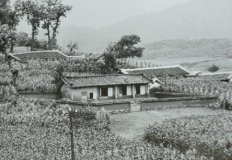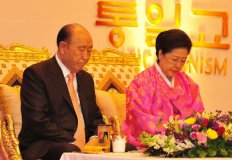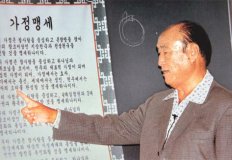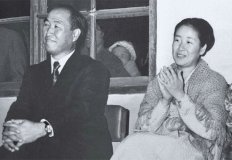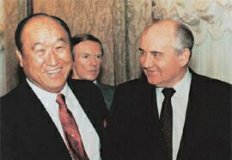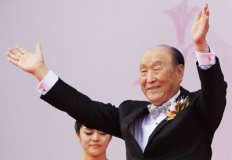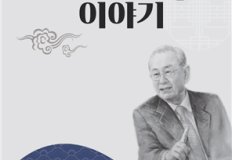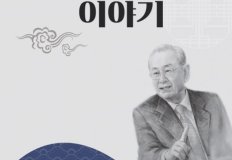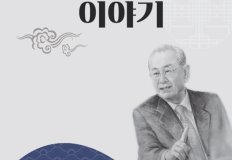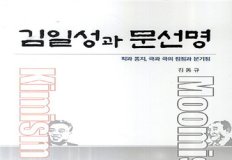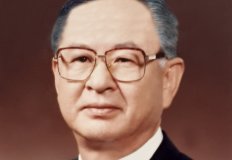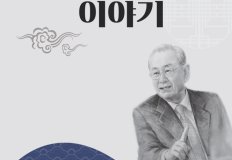Lord of the Flies is a 1954 novel by the Nobel Prize-winning British author William Golding. The plot concerns a group of British boys who are stranded on an uninhabited island and their disastrous attempts to govern themselves. Themes include the tension between groupthink and individuality, between rational and emotional reactions, and between morality and immorality.
The novel, which was Golding's debut, was generally well received. It was named in the Modern Library 100 Best Novels, reaching number 41 on the editor's list, and 25 on the reader's list. In 2003, it was listed at number 70 on the BBC's The Big Read poll, and in 2005 Time magazine named it as one of the 100 best English-language novels published between 1923 and 2005, and included it in its list of the 100 Best Young-Adult Books of All Time. Popular reading in schools, especially in the English-speaking world, Lord of the Flies was ranked third in the nation's favourite books from school in a 2016 UK poll.
Background
Published in 1954, Lord of the Flies was Golding's first novel. The idea came about after Golding read what he deemed to be an unrealistic depiction of stranded children in youth novels like The Coral Island: a Tale of the Pacific Ocean (1857) by R. M. Ballantyne, which includes themes of the civilising effect of Christianity and the importance of hierarchy and leadership. Golding asked his wife, Ann, if it would "be a good idea if I wrote a book about children on an island, children who behave in the way children really would behave?"[3] As a result, the novel contains various references to The Coral Island, such as the rescuing naval officer's description of the boys' initial attempts at civilised cooperation as "a jolly good show, like the Coral Island".[4] Golding's three central characters (Ralph, Piggy, and Jack) have also been interpreted as caricatures of Ballantyne's Coral Island protagonists.[5]
The manuscript was rejected by many publishers before finally being accepted by London-based Faber & Faber; an initial rejection by the professional reader, Miss Perkins, at Faber labelled the book an "Absurd and uninteresting fantasy about the explosion of an atomic bomb on the colonies and a group of children who land in the jungle near New Guinea. Rubbish and dull. Pointless".[6] However, Charles Monteith decided to take on the manuscript[7] and worked with Golding to complete several fairly major edits, including the removal of the entire first section of the novel, which had previously described an evacuation from nuclear war.[6] As well as this, the character of Simon was heavily redacted by Monteith, including the removal of his interaction with a mysterious lone figure who is never identified but implied to be God.[8] Monteith himself was concerned about these changes, completing "tentative emendations", and warning against "turning Simon into a prig".[6] Ultimately, Golding made all of Monteith's recommended edits and wrote back in his final letter to his editor that "I've lost any kind of objectivity I ever had over this novel and can hardly bear to look at it."[9] These manuscripts and typescripts are now available from the Special Collections Archives at the University of Exeter library for further study and research.[10] The collection includes the original 1952 "Manuscript Notebook" (originally a Bishop Wordsworth's School notebook) containing copious edits and strikethroughs.
With the changes made by Monteith and despite the initial slow rate of sale (about three thousand copies of the first print sold slowly), the book soon went on to become a best-seller, with more than ten million copies sold as of 2015.[7] It has been adapted to film twice in English, in 1963 by Peter Brook and 1990 by Harry Hook, and once in Filipino by Lupita A. Concio (1975).
The book begins with the boys' arrival on the island after their plane has been shot down during what seems to be part of a nuclear World War III.[11] Some of the marooned characters are ordinary students, while others arrive as a musical choir under an established leader. With the exception of Sam, Eric, and the choirboys, they appear never to have encountered each other before. The book portrays their descent into savagery; left to themselves on a paradisiacal island, far from modern civilization, the well-educated boys regress to a primitive state.
Plot
In the midst of a wartime evacuation, a British aeroplane crashes on or near an isolated island in a remote region of the Pacific Ocean. The only survivors are boys in their middle childhood or preadolescence. Two boys named Ralph and Piggy find a conch, which Ralph uses as a horn to convene the survivors to one area. Ralph immediately commands authority over the other boys using the conch, and is elected their "chief". He establishes three primary policies: to have fun, to survive, and to constantly maintain a smoke signal that could alert passing ships of their presence. Ralph and two other boys named Jack and Simon use Piggy's glasses to create the signal fire.
The semblance of order quickly deteriorates as the majority of the boys turn idle and develop paranoia towards an imaginary monster they call the "beast", which they all slowly begin to believe exists on the island. Ralph fails to convince the boys that no beast exists, while Jack gains popularity by declaring that he will personally hunt and kill the beast. At one point, Jack summons many of the boys to hunt down a wild pig, drawing away those assigned to maintain the signal fire. The extinguished smoke signal fails to attract a ship passing by the island. Ralph angrily confronts Jack about his failure to maintain the signal, but he is rebuffed by the other boys. A disillusioned Ralph considers relinquishing his position as leader, but is persuaded not to do so by Piggy.
One night, an aerial battle occurs near the island while the boys sleep, during which a fighter pilot ejects from his plane and dies in the descent. His body drifts down to the island in his parachute and get tangled in a tree. Twin boys Sam and Eric see the corpse of the fighter pilot and mistake it for the beast. When Ralph, Jack, and another boy named Roger investigate the corpse, they flee, incorrectly believing the beast is real. Jack calls an assembly and tries to turn the others against Ralph, but initially receives no support. Jack storms off alone to form his own tribe, with the other boys gradually joining him.
Simon often ventures out into the island's forest to be alone. One day while he is there, Jack and his followers erect an offering to the beast nearby: a pig's head, mounted on a sharpened stick and swarming with scavenging flies. Simon conducts an imaginary dialogue with the head, which he dubs the "Lord of the Flies". The head tells Simon that there is no beast on the island, and predicts that the other boys will turn on him. That night, Ralph and Piggy visit Jack's tribe, discovering that they have begun painting their faces and engaging in primitive ritual dances. Simon discovers that the "beast" is the dead parachutist, and rushes down to tell Jack's tribe. The frenzied boys mistake Simon for the beast, attack him, and beat him to death. Ralph and Piggy participate in the melee, and become deeply disturbed by Jack's violence.
Jack and his rebel band decide to steal Piggy’s glasses, the only means the boys have of starting a fire. They raid Ralph's camp, confiscate the glasses, and return to their abode on an outcropping called Castle Rock. Deserted by most of his supporters, Ralph journeys to Castle Rock with Piggy, Sam, and Eric in order to confront Jack and retrieve the glasses. The boys reject Ralph, with Roger killing Piggy and shattering the conch. Ralph manages to escape, but Sam and Eric are tortured by Roger until they agree to join Jack's tribe.
Ralph secretly confronts Sam and Eric, who warn him that Jack plans to hunt him like a pig and behead him. The following morning, Jack's tribe sets fire to the forest, with Ralph narrowly escaping his hunters. Following a long chase, most of the island is consumed in flames. With the hunters closely behind him, Ralph trips and falls in front of a British naval officer whose party has landed to investigate the fire. Ralph bursts into tears over the deaths of Simon and Piggy. Jack and the other boys, filthy and unkempt, also revert to their true ages and erupt into sobs. The officer expresses his disappointment at seeing British boys exhibiting such feral, warlike behaviour.
Themes
At an allegorical level, the central theme is the conflicting human impulses toward civilisation and social organisation—living by rules, peacefully and in harmony—and toward the will to power. Themes include the tension between groupthink and individuality, between rational and emotional reactions, and between morality and immorality. How these play out and how different people feel their influence form a major subtext of Lord of the Flies, with the central themes addressed in an essay by American literary critic Harold Bloom.[12] The name "Lord of the Flies" is a literal translation of Beelzebub, from 2 Kings 1:2–3, 6, 16.
Reception
The book, originally entitled Strangers from Within, was initially rejected by an in-house reader, Miss Perkins, at London based publishers Faber and Faber as "Rubbish & dull. Pointless".[7] The title was considered "too abstract and too explicit". Following a further review, the book was eventually published as Lord of the Flies.[13][14]
A turning point occurred when E. M. Forster chose Lord of the Flies as his "outstanding novel of the year."[7] Other reviews described it as "not only a first-rate adventure but a parable of our times".[7] In February 1960, Floyd C. Gale of Galaxy Science Fiction rated Lord of the Flies five stars out of five, stating that "Golding paints a truly terrifying picture of the decay of a minuscule society ... Well on its way to becoming a modern classic".[15]
"Lord of the Flies presents a view of humanity unimaginable before the horrors of Nazi Europe, and then plunges into speculations about mankind in the state of nature. Bleak and specific, but universal, fusing rage and grief, Lord of the Flies is both a novel of the 1950s, and for all time."
—Robert McCrum, The Guardian.[7]
In his book Moral Minds: How Nature Designed Our Universal Sense of Right and Wrong, Marc D. Hauser says the following about Golding's Lord of the Flies: "This riveting fiction, standard reading in most intro courses to English literature, should be standard reading in biology, economics, psychology, and philosophy."[16]
Its stances on the already controversial subjects of human nature and individual welfare versus the common good earned it position 68 on the American Library Association's list of the 100 most frequently challenged books of 1990–1999.[17] The book has been criticized as "cynical" and portraying humanity exclusively as "selfish creatures". It has been linked with "Tragedy of the commons" by Garrett Hardin and books by Ayn Rand, and countered by "Management of the Commons" by Elinor Ostrom. Parallels have been drawn between the "Lord of the Flies" and an actual incident from 1965 when a group of schoolboys who sailed a fishing boat from Tonga were hit by a storm and marooned on the uninhabited island of ʻAta, considered dead by their relatives in Nuku‘alofa. The group not only managed to survive for over 15 months but "had set up a small commune with food garden, hollowed-out tree trunks to store rainwater, a gymnasium with curious weights, a badminton court, chicken pens and a permanent fire, all from handiwork, an old knife blade and much determination". As a result, when ship captain Peter Warner found them, they were in good health and spirits. Dutch historian Rutger Bregman, writing about this situation said that Golding's portrayal was unrealistic.[18]
- It was awarded a place on both lists of Modern Library 100 Best Novels, reaching number 41 on the editor's list, and 25 on the reader's list.[19]
- In 2003, the novel was listed at number 70 on the BBC's survey The Big Read.[20]
- In 2005, the novel was chosen by Time magazine as one of the 100 best English-language novels from 1923 to 2005.[21] Time also included the novel in its list of the 100 Best Young-Adult Books of All Time.[22]
Popular in schools, especially in the English-speaking world, a 2016 UK poll saw Lord of the Flies ranked third in the nation's favourite books from school, behind George Orwell’s Animal Farm and Charles Dickens’ Great Expectations.[23]
On 5 November 2019, BBC News listed Lord of the Flies on its list of the 100 most inspiring novels.[24]
In other media
Film
There have been three film adaptations based on the book:
A fourth adaptation, to feature an all-female cast, was announced by Warner Bros. in August 2017,[25][26] but was subsequently abandoned. In July 2019, director Luca Guadagnino was said to be in negotiations for a conventionally cast version.[27][28] Ladyworld, an all-female adaptation, was released in 2018.
Stage
Nigel Williams adapted the text for the stage. It was debuted by the Royal Shakespeare Company in July 1996. The Pilot Theatre Company has toured it extensively in the United Kingdom and elsewhere.
In October 2014 it was announced that the 2011 production[29][failed verification] of Lord of the Flies would return to conclude the 2015 season at the Regent's Park Open Air Theatre ahead of a major UK tour. The production was to be directed by the Artistic Director Timothy Sheader who won the 2014 Whatsonstage.com Awards Best Play Revival for To Kill a Mockingbird.
Kansas-based Orange Mouse Theatricals and Mathew Klickstein produced a topical, gender-bending adaptation called Ladies of the Fly that was co-written by a group of young girls (ages 8–16) based on both the original text and their own lives.[30] The production was performed by the girls themselves as an immersive live-action show in August 2018.
Radio
In June 2013, BBC Radio 4 Extra broadcast a dramatisation by Judith Adams in four 30-minute episodes directed by Sasha Yevtushenko.[31] The cast included Ruth Wilson as "The Narrator", Finn Bennett as "Ralph", Richard Linnel as "Jack", Caspar Hilton-Hilley as "Piggy" and Jack Caine as "Simon".
- Fire on the Mountain
- Painted Faces
- Beast from the Air
- Gift for Darkness
Influence
![[icon]](https://upload.wikimedia.org/wikipedia/commons/thumb/1/1c/Wiki_letter_w_cropped.svg/20px-Wiki_letter_w_cropped.svg.png) | This section needs expansion. You can help by adding to it. (April 2015) |
Many writers have borrowed plot elements from Lord of the Flies. By the early 1960s, it was required reading in many schools and colleges.[32]
Literature
Author Stephen King uses the name Castle Rock, from the mountain fort in Lord of the Flies, as a fictional town that has appeared in a number of his novels.[33] The book itself appears prominently in his novels Hearts in Atlantis (1999), Misery (1987), and Cujo (1981).[34]
King wrote an introduction for a new edition of Lord of the Flies (2011) to mark the centenary of William Golding's birth in 1911.[35]
King's fictional town of Castle Rock inspired the name of Rob Reiner's production company, Castle Rock Entertainment, which produced the film Lord of the Flies (1990).[35]
Music
Iron Maiden wrote a song inspired by the book, included in their 1995 album The X Factor.[36]
The Filipino indie pop/alternative rock outfit The Camerawalls include a song entitled "Lord of the Flies" on their 2008 album Pocket Guide to the Otherworld.[37]
Editions
- Golding, William (1958) [1954]. Lord of the Flies (Print ed.). Boston: Faber & Faber.
See also
References
- ^ "Bound books – a set on Flickr". 22 November 2007. Archived from the original on 25 October 2014. Retrieved 10 September 2012.
- ^ Amazon, "Lord of the Flies: Amazon.ca" Archived 20 May 2021 at the Wayback Machine, Amazon
- ^ Presley, Nicola. "Lord of the Flies and The Coral Island." William Golding Official Site, 30th Jun 2017, https://william-golding.co.uk/lord-flies-coral-island Archived 23 January 2021 at the Wayback Machine. Accessed 9th Feb 2021.
- ^ Reiff, Raychel Haugrud (2010), William Golding: Lord of the Flies, Marshall Cavendish, p. 93, ISBN 978-0-7614-4700-9
- ^ Singh, Minnie (1997), "The Government of Boys: Golding's Lord of the Flies and Ballantyne's Coral Island", Children's Literature, 25: 205–213, doi:10.1353/chl.0.0478
- ^ Jump up to:a b c Monteith, Charles. "Strangers from Within." William Golding: The Man and His Books, edited by John Carey, Farrar Straus & Giroux, 1987.
- ^ Jump up to:a b c d e f "The 100 best novels: No 74 – Lord of the Flies by William Golding (1954)". The Guardian. Archived from the original on 12 June 2020. Retrieved 25 June 2020.
- ^ Kendall, Tim. Email, University of Exeter, received 5th Feb 2021.
- ^ Williams, Phoebe (6 June 2019). "New BBC programme sheds light on the story behind the publication of Lord of the Flies". Faber & Faber Official Site. Archived from the original on 1 May 2021. Retrieved 14 February 2021.
- ^ "EUL MS 429 - William Golding, Literary Archive". Archives Catalogue. University of Exeter. Retrieved 6 October 2021.
The collection represents the literary papers of William Golding and consists of notebooks, manuscript and typescript drafts of Golding's novels up to 1989.
- ^ Weiskel, Portia Williams, ed. (2010). "Peter Edgerly Firchow Examines the Implausible Beginning and Ending of Lord of the Flies". William Golding's Lord of the Flies. Bloom's Guides. Infobase. ISBN 9781438135397. Archived from the original on 11 June 2020. Retrieved 14 August 2017.
- ^ Bloom, Harold. "Major themes in Lord of the Flies" (PDF). Archived (PDF) from the original on 11 December 2019. Retrieved 11 December 2019.
- ^ Symons, Julian (26 September 1986). "Golding's way". The Guardian. ISSN 0261-3077. Archived from the original on 6 October 2019. Retrieved 28 April 2019.
- ^ Faber, Toby (28 April 2019). "Lord of the Flies? 'Rubbish'. Animal Farm? Too risky – Faber's secrets revealed". The Observer. ISSN 0029-7712. Archived from the original on 28 April 2019. Retrieved 28 April 2019.
- ^ Gale, Floyd C. (February 1960). "Galaxy's 5 Star Shelf". Galaxy Science Fiction. pp. 164–168.
- ^ Marc D. Hauser (2006). Moral Minds: How Nature Designed Our Universal Sense of Right and Wrong. page 252.
- ^ "100 most frequently challenged books: 1990–1999". American Library Association. 2009. Archived from the original on 15 May 2010. Retrieved 16 August 2009.
- ^ Bregman, Rutger (9 May 2020). "The real Lord of the Flies: what happened when six boys were shipwrecked for 15 months". The Guardian. ISSN 0261-3077. Archived from the original on 9 May 2020. Retrieved 9 May 2020.
- ^ Kyrie O'Connor (1 February 2011). "Top 100 Novels: Let the Fighting Begin". Houston Chronicle. Archived from the original on 30 July 2012. Retrieved 12 December 2019.
- ^ "The Big Read – Top 100 Books". BBC. April 2003. Archived from the original on 28 October 2012. Retrieved 18 October 2012.
- ^ Grossman, Lev; Lacayo, Richard (6 October 2005). "ALL-TIME 100 Novels. Lord of the Flies (1955), by William Golding". Time. ISSN 0040-781X. Archived from the original on 10 December 2012. Retrieved 10 December 2012.
- ^ "100 Best Young-Adult Books". Time. Archived from the original on 22 January 2020. Retrieved 11 December 2019.
- ^ "George Orwell's Animal Farm tops list of the nation's favourite books from school". The Independent. Archived from the original on 11 December 2019. Retrieved 11 December 2019.
- ^ "100 'most inspiring' novels revealed by BBC Arts". BBC News. 5 November 2019. Archived from the original on 3 November 2020. Retrieved 10 November 2019.
The reveal kickstarts the BBC's year-long celebration of literature.
- ^ Fleming, Mike, Jr (30 August 2017). "Scott McGehee & David Siegel Plan Female-Centric 'Lord of the Flies' At Warner Bros". Deadline. Archived from the original on 6 March 2018. Retrieved 11 April 2018.
- ^ France, Lisa Respers (1 September 2017). "'Lord of the Flies' all-girl remake sparks backlash". Entertainment. CNN. Archived from the original on 7 November 2017. Retrieved 11 April 2018.
- ^ Kroll, Justin (29 July 2019). "Luca Guadagnino in Talks to Direct 'Lord of the Flies' Adaptation (EXCLUSIVE)". Variety. Archived from the original on 30 July 2019. Retrieved 15 May 2020.
- ^ Lattanzio, Ryan (25 April 2020). "Luca Guadagnino Taps 'A Monster Calls' Author to Write 'Lord of the Flies' Adaptation". IndieWire. Archived from the original on 24 September 2020. Retrieved 15 May 2020.
- ^ "Lord of the Flies, Open Air Theatre, Regent's Park, review". The Telegraph. Archived from the original on 30 May 2011. Retrieved 26 May 2011.
- ^ "Orange Mouse Theatricals to stage re-imagined 'Lord of the Flies' with an all-female twist". LJWorld.com.
- ^ "William Golding – Lord of the Flies". BBC Radio 4. Archived from the original on 20 June 2013.
- ^ Ojalvo, Holly Epstein; Doyne, Shannon (5 August 2010). "Teaching 'The Lord of the Flies' With The New York Times". The New York Times. Archived from the original on 8 January 2018. Retrieved 6 May 2018.
- ^ Beahm, George (1992). The Stephen King story (Revised ed.). Kansas City: Andrews and McMeel. p. 120. ISBN 0-8362-8004-0.
Castle Rock, which King in turn had got from Golding's Lord of the Flies.
- ^ Liukkonen, Petri. "Stephen King". Books and Writers (kirjasto.sci.fi). Finland: Kuusankoski Public Library. Archived from the original on 23 March 2007.
- ^ Jump up to:a b King, Stephen (2011). "Introduction by Stephen King". Faber and Faber. Archived from the original on 24 July 2012. Retrieved 12 October 2011.
- ^ "CALA (-) LAND". ilcala.blogspot.com. Archived from the original on 13 October 2016. Retrieved 6 May 2018.
- ^ "Indie band The Camerawalls releases debut album". Archived from the original on 10 June 2020. Retrieved 10 May 2020.
External links
===
Lord of the Flies (1963 film)
From Wikipedia, the free encyclopedia
Jump to navigationJump to search| Lord of the Flies |
|---|
 Theatrical release poster |
| Directed by | Peter Brook |
|---|
| Written by | Peter Brook |
|---|
| Based on | Lord of the Flies
by William Golding |
|---|
| Produced by | Lewis M. Allen |
|---|
| Starring | |
|---|
| Cinematography | Tom Hollyman |
|---|
| Edited by | |
|---|
| Music by | Raymond Leppard |
|---|
Production
companies | - Lord of the Flies Company
- Allen-Hodgdon Productions
- Two Arts
|
|---|
| Distributed by | British Lion Film Corporation |
|---|
Release dates | - 12 May 1963 (Cannes)
- 23 July 1964 (United Kingdom)
|
|---|
Running time | 92 minutes |
|---|
| Country | United Kingdom |
|---|
| Language | English |
|---|
| Budget | $250,000 (£80,000)[1] |
|---|
Lord of the Flies is a 1963 British drama film based on William Golding's 1954 novel of the same name about 30 schoolboys who are marooned on an island where the behaviour of the majority degenerates into savagery. It was written and directed by Peter Brook and produced by Lewis M. Allen. The film was in production for much of 1961, though the film did not premiere until 1963, and was not released in the United Kingdom until 1964. Golding himself supported the film. When Kenneth Tynan was a script editor for Ealing Studios he commissioned a script of Lord of the Flies from Nigel Kneale, but Ealing Studios closed in 1959 before it could be produced.
The novel was adapted into a movie for a second time in 1990; the 1963 film is generally considered more faithful to the novel than the 1990 adaptation.
A group of schoolboys is evacuated from England following the outbreak of an unidentified war. Their aircraft is shot down by briefly-glimpsed fighter planes and ditches near a remote island.
The main character, Ralph, is seen walking through a tropical forest. He meets a chubby, bespectacled, intelligent boy who reveals his school nickname was Piggy, but asks that Ralph not repeat that. The two go to the beach where they find a conch shell, which Ralph blows to rally the other survivors. As they emerge from the jungle, it becomes clear that no adults have escaped the crash. Singing is then heard and a small column of school choir boys, wearing dark cloaks and hats and led by a boy named Jack Merridew, walk towards Ralph and Piggy.
The boys decide to appoint a chief. The vote goes to Ralph, not Jack. Initially, Ralph is able to steer the boys (all of whom are aged between about six and fourteen) towards a reasonably civilised and co-operative society. The choir boys make wooden spears, creating the appearance that they are warriors within the group. Crucially, Jack has a knife. Ralph, Jack, and a choir boy named Simon go off to explore, and find out they are indeed on a deserted island. The boys have another assembly where Ralph tells the boys to make a fire.
The boys build shelters and start a signal fire using Piggy's spectacles. With no rescue in sight, the increasingly authoritarian and violence-prone Jack starts hunting and eventually finds a pig. Meanwhile, the fire, for which he and his "hunters" are responsible, goes out, losing the boys' chance of being spotted from a passing aeroplane. Piggy chastises Jack, and Jack strikes him in retaliation, knocking his glasses off, and breaking one lens. Ralph is furious with Jack. Soon some of the boys begin to talk of a beast that comes from the water. The next day, twins Sam and Eric see something land on the mountain, and they tell the boys it's another beast. All the boys except Piggy and the littluns go searching for it. Ralph, Jack, and another boy named Roger continue on to the top of the mountain and see something move. The boys all run away. The next day, Jack, obsessed with this imagined threat, leaves the group to start a new tribe, one without rules, where the boys play and hunt all day. Soon, more follow until only a few, including Piggy, are left with Ralph.
Events reach a crisis when Simon finds a sow's head impaled on a stick, left by Jack as an offering to the beast. He becomes hypnotized by the head, which has flies swarming all around it. Simon then climbs the mountain and sees that what the other boys thought was a beast is actually the dead body of a parachutist. Simon runs to Jack's camp in an attempt to tell them the truth, but the frenzied boys in the darkness mistake him for the beast, and beat him to death. Piggy defends the group's actions with a series of rationalisations and denials. The hunters raid the old group's camp and steal Piggy's glasses. Ralph goes to talk to the new group using the still-present power of the conch to get their attention. However, when Piggy takes the conch, they are not silent (as their rules require) but instead jeer. Roger pushes a boulder off a cliff which falls on Piggy, killing him and crushing the conch. Piggy's body falls into the ocean and gets washed away.
Ralph hides in the jungle. Jack and his hunters set fires to smoke him out, and Ralph staggers across the smoke-covered island. Stumbling onto the beach, Ralph falls at the feet of a naval officer who stares in shock at the painted and spear-carrying savages that the boys have become, before turning to his accompanying landing party. One of the youngest boys tries to tell the officer his name, but cannot remember it. The last scene shows Ralph sobbing as flames spread across the island.
- James Aubrey as Ralph
- Tom Chapin as Jack
- Hugh Edwards as Piggy
- Roger Elwin as Roger
- Tom Gaman as Simon
- David Surtees as Sam
- Simon Surtees as Eric
- Nicholas Hammond as Robert
- Roger Allan as Piers
- Kent Fletcher as Percival
- Richard Horne as Lance
- Timothy Horne as Leslie
- Andrew Horne as Matthew
- Peter Davy as Peter
- David Brunjes as Donald
- Christopher Harris as Bill
- Alan Heaps as Neville
- Jonathan Heaps as Howard
- Burnes Hollyman as Douglas
- Peter Ksiezopolski as Francis
- Anthony Mcall-Judson as Maurice
- Malcolm Rodker as Harold
- David St. Clair as George
- Rene Sanfiorenzo Jr. as Charles
- Jeremy Scuse as Rowland
- John Stableford as Digby
- Nicholas Valkenburg as Rupert
- Patrick Valkenburg as Robin
- Edward Valencia as Frederick
- David Walsh as Percy
- John Walsh as Michael
- Jeremy Willis as Henry
- Erik Jordan as Head Clapper Boy
As with Golding's book, the pessimistic theme of the film is that fear, hate and violence are inherent in the human condition – even when innocent children are placed in seemingly idyllic isolation. The realisation of this is seen as being the cause of Ralph's distress in the closing shots.[2]
Charles Silver, curator in the Department of Film at MoMA, wrote that the film is "about anarchy and how that thin veneer we wear of what we refer to as 'civilization' is threatened by the attractive clarion call of bestiality and its accompanying hatred".[3]
Production[edit]
Filming[edit]
The parents of the boys chosen as actors were reported to have been provided copies of the novel, from which a commentary had been physically removed; those pages included describing the culmination of the hunt of a wild sow as an "Oedipal wedding night". Brook noted that "time was short; we were lent the children by unexpectedly eager parents just for the duration of the summer holidays".[4]
The film was shot entirely in Puerto Rico at Aguadilla, El Yunque and on the island of Vieques.[5] The boys in the cast were all non-professional, had mostly not read the book, and actual scripting was minimal; scenes were filmed by explaining them to the boys, who then acted them out, with some of the dialogue improvised.[3][6] Life magazine journalist Robert Wallace visited them there and observed one of them amusing himself by feeding live lizards into the blades of a rotating fan. Wallace commented: "One could almost hear William Golding, 4,000 miles away in England, chuckling into his beard."[6]
The 60 hours of film from the 1961 shoot was edited down to 4 hours, according to editor Gerald Feil. This was further edited to a 100-minute feature that was shown at the 1963 Cannes Film Festival (9 to 22 May), but the cuts necessitated that new audio transitions and some dialog changes be dubbed into the film more than a year after shooting. The voice of James Aubrey, who played Ralph, had dropped three octaves and was electronically manipulated to better approximate his earlier voice, but it is still significantly different. Tom Chapin, who played Jack, had lost his English accent and another boy's voice was used to dub his parts. The U.S. distributor insisted the film be further edited to 90 minutes, so one fire scene and scenes developing the character of Ralph were cut.
In 1996, Peter Brook organised a reunion for the cast members for a documentary film titled Time Flies. Brook was "curious to know what the years had done to his cast, and what effect the isolated months of filming had had on their lives".[7] Although none seemed damaged by their time working on the film, Simon Surtees, one of a pair of twin brothers who played Sam and Eric, "put his finger unerringly on the ethical dilemma. The problem is that most of us are not trained artists, so I now believe Peter runs the risk of abandoning us to our fate, just as he did in 1961, when he plucked us from our schools and our homes, put us on the island, then cast us back to live our lives as if nothing would ever change."[7]
Tom Gaman, who played Simon in Brook's film, remembered that "although I didn't think much about it at the time, in hindsight my death scene scares me. It was night, the spears – those wooden stakes – were quite real. We were excited, brandishing flaming sticks around a bonfire on the beach in a real storm. I really did emerge from the bushes into the centre of a raging crowd, screamed in terror, was stabbed by boys with sharpened sticks, and staggered to the water."[8]
The song, heard throughout the film, of the boys singing is Kyrie Eleison which, translated from Greek, means "Lord, have mercy". It is an expression used in a prayer of the Christian liturgy.
Reception[edit]
Critical response[edit]
Rotten Tomatoes reported that 91% of critics have given the film a positive review based on 22 reviews, with an average rating of 8.19/10.[9] On Metacritic, the film has a weighted average score of 67 out of 100 based on 9 critic reviews, indicating "generally favorable reviews".[10]
PopMatters journalist J.C. Maçek III wrote "The true surprise in Lord of the Flies is how little these child actors actually feel like 'child actors'. With few exceptions, the acting rarely seems to be forced or flat. This practiced, well-honed craft aids Brook's vision of a fly on the wall approach that pulls the viewer into each scene."[11]
Bosley Crowther wrote in The New York Times that "the picture made from it by the writer-director Peter Brook is a curiously flat and fragmentary visualization of the original. It is loosely and jerkily constructed, in its first and middle phases, at least, and it has a strangely perfunctory, almost listless flow of narrative in most of its scenes".[12]
Accolades[edit]
Peter Brook was nominated for the Golden Palm at the 1963 Cannes Film Festival.[13]
The film was named one of the Top Ten Films of the year in 1963 by the National Board of Review.[14]
Home media[edit]
The Criterion Collection released it on DVD and Blu-ray Disc in America and Canada. In 2000 Janus Films also released the DVD in the UK.
See also[edit]
- Survival film, about the film genre, with a list of related films
References[edit]
- ^ De la Mare, Richard; Hatton, Maurice (29 November 1962). "Peter Brook film director". The Guardian. p. 6.
- ^ Robert Wallace, Life Magazine 25 October 1963
- ^ Jump up to:a b Silver, Charles (12 November 2013). "Peter Brook's Lord of the Flies". MoMA. Retrieved 6 June 2016.
- ^ Brook, Peter (1998). Threads of time : a memoir (Paperback. ed.). London: Methuen Drama. p. 129. ISBN 0413733009.
- ^ Carrasquilo, José (2016). "When Lord of the Flies Came to Vieques". Vieques Insider. Retrieved 21 April 2019.
- ^ Jump up to:a b Michael, Brooke. "Lord of the Flies (1963)". www.screenonline.org.uk. Retrieved 20 July 2015.
- ^ Jump up to:a b Hollindale, Peter. "A History of Savages". www.tes.co.uk. Archived from the original on 12 March 2016. Retrieved 20 July 2015.
- ^ Gaman, Tom. "Flies". www.forestdata.com. Archived from the original on 4 March 2016. Retrieved 20 July 2015.
- ^ "Lord of the Flies (1963)". Rotten Tomatoes. Retrieved 10 March 2020.
- ^ "Lord of the Flies (1963) Reviews". Metacritic. Retrieved 10 March 2020.
- ^ Maçek III, J.C. (6 September 2013). "Have Mercy: 'Lord of the Flies'". PopMatters.
- ^ Crowther, Bosley. "Lord of the Flies (1963) Screen: Agitating Fable of Wild Boys:Savagery Is Depicted in 'Lord of the Flies'". www.nytimes.com. Retrieved 20 July 2015.
- ^ "Festival de Cannes: Lord of the Flies". festival-cannes.com. Retrieved 27 February 2009.
- ^ "1963 Award Winners". Nationalboardofreview.org. Retrieved 20 July 2015.
External links[edit]
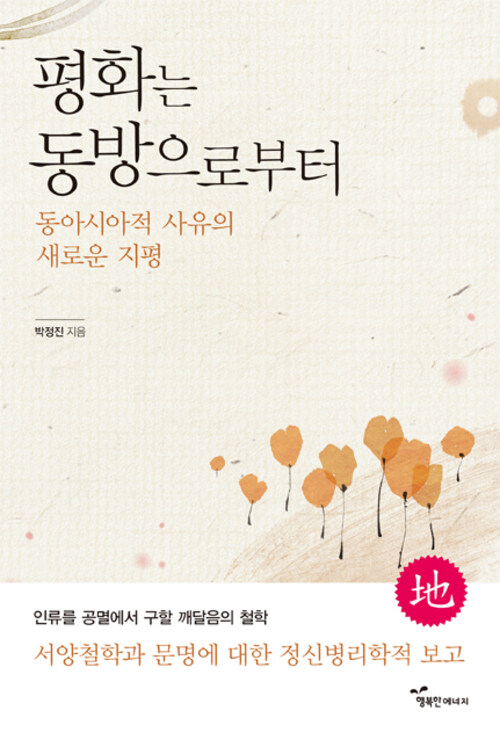







 문선명 선생은 ‘하나님의 말씀’에서 분명히 종래에는 어느 누구도 듣지 못했던 시대적 의미를 들었다. 그것이 ‘천명(天命)’이고 ‘성약(成約)’의 의미이다. 선생의 신학적·철학적 사상이 ‘통일’이라는 이름에서 집약되지만 통일이라는 용어는 참으로 심장한 의미가 들어 있다. 그것을 단순히 기존의 것을 통합하거나 통일하는 것이 아니라 새로운 복음으로서 오직 그 자신만의 깨달음에 의해서 그물의 강(綱)을 만들고 윤(倫)을 만들어낸 것이다.
문선명 선생은 ‘하나님의 말씀’에서 분명히 종래에는 어느 누구도 듣지 못했던 시대적 의미를 들었다. 그것이 ‘천명(天命)’이고 ‘성약(成約)’의 의미이다. 선생의 신학적·철학적 사상이 ‘통일’이라는 이름에서 집약되지만 통일이라는 용어는 참으로 심장한 의미가 들어 있다. 그것을 단순히 기존의 것을 통합하거나 통일하는 것이 아니라 새로운 복음으로서 오직 그 자신만의 깨달음에 의해서 그물의 강(綱)을 만들고 윤(倫)을 만들어낸 것이다.
